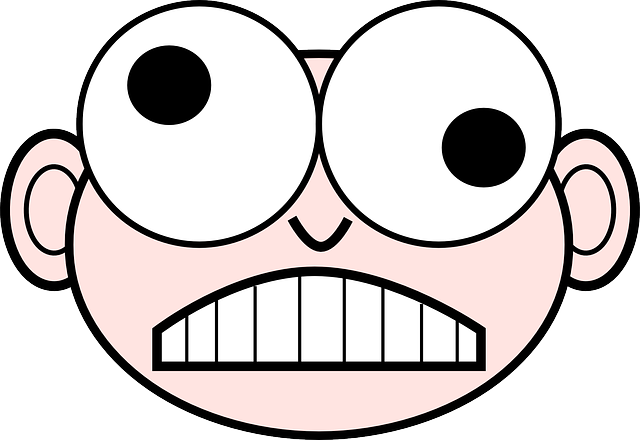What’s your problem?
Really, what’s your problem? I’m talking of course about the problem you’re writing about and that you are going to use for your problem statement.
Do you have a problem in mind? Good. That’s a start.
I bet your problem isn’t that you don’t have a topic, is it? (If you need help with that, check out these problem-solution essay topics).
I bet the real problem is that you’ve been on the verge of pulling your hair out because you don’t even know what a problem statement is, let alone how to write one, right?
Don’t drive yourself crazy trying to figure out how to write a problem statement without any guidance.
I’m here to show you how to write a problem statement in just 3 quick steps.

What is a Problem Statement?
A problem statement is a short piece of writing (usually about a paragraph long) that explains 5 key points:
- the ideal situation,
- the problem you’ll discuss in your paper,
- evidence as to why the current situation isn’t ideal,
- a solution to the problem, and
- possible consequences if the problem is not solved.
A problem statement is a bit like a thesis statement. It provides readers with a brief, yet concise overview of your paper.
How to Write a Problem Statement Without Going Nuts

Step 1: Describe the ideal situation
Once you know the problem you’ll use for your paper, think about the ideal situation. In a perfect world, what would things look like?
In other words, if there were no problem, what would the world be like? Okay, you don’t have to necessarily choose a life-changing, global problem, but you get my point, right?
Still not sure what I mean? Let’s work through an example.
Pretend you’re writing about the MTV series Teen Mom. Just as the show’s title suggests, it follows the lives of a handful of teen moms. Some say the show warns of the struggles of being a teen mom, while others feel it glamorizes teen pregnancy.
Let’s say you side with the group that feels the series glorifies teenage pregnancy.
Your first step is to explain the ideal situation, that is what the show should do. In this case, the show should illustrate the actual struggles of teen moms.
Here’s an example:
The MTV program, Teen Mom, is supposedly designed to illustrate the struggles of teen mothers as they attempt to balance being teenagers with working through relationships and raising children.
This example explains that ideally the series would illustrate the struggles of a teen mother, as that’s how the show is supposedly designed.
Step 2: Explain why the current situation doesn’t meet the ideal
In step 2, provide evidence that the problem exists. You’ll need to list examples to prove your point and explain why the situation isn’t ideal.
You don’t need to limit yourself to a one sentence description, but you should be able to explain the situation in a few well-worded sentences.
In the Teen Mom example, you’ll provide evidence that the show doesn’t accurately reflect the struggles of being a teenage mother.
Here’s an example:
Yet a closer examination of the program reveals that the series actually glorifies teen pregnancy by making celebrities out of the women. The moms often live in pricey homes, drive expensive vehicles, and are continually profiled in magazines, tabloids, and on online celebrity gossip web pages. This lifestyle certainly does not reflect the average experience of a struggling teen mom.
This example explains that the problem with the series is that it doesn’t really show viewers a true depiction of the life of a teenage mother.
Notice that I’ve used the word “yet” as a transition word to link Step 1 and Step 2.
Using “yet” as a transition illustrates the contrast between the ideal situation and the reality of the situation (why the situation doesn’t meet the ideal).
Step 3: Describe how to solve the problem and include possible consequences if the problem isn’t solved
In the final step, describe a solution to the problem and explain what might happen if the problem isn’t solved.
Again, the statement must be concise. One or two sentences will do. Don’t write a novel just to explain how to solve the problem. Save the lengthy description for your paper.
Here’s an example:
Thus unless the series provides a more accurate representation of life as a teen parent, viewers who look to Teen Mom to watch the reality of teenage motherhood will be misinformed.
This example explains that the series should provide a more accurate depiction of being a teen mother and explains that viewers will get the wrong impression of life as a teen mom from viewing the show.
As you can see, I haven’t gone into great detail about how to solve the problem or what the consequences will be for failing to solve the problem. I’ve only provided a one sentence overview.
The goal of the problem statement is not to explain this information in detail.
The goal is to simply provide readers an overview of what your paper will discuss. If people want to know the details, they’ll read your paper.
Notice, also, that I’ve used another transition to link Steps 2 and 3 and have summarized both the solution and possible consequences in only one sentence.
Remember, brevity and conciseness are your friends when writing a problem statement.
Let’s take a look at the completed problem statement:
The MTV program, Teen Mom, is supposedly designed to illustrate the struggles of teen mothers as they attempt to balance being teenagers with working through relationships and raising children. Yet a closer examination of the program reveals that the series actually glorifies teen pregnancy by making celebrities out of the women. The moms often live in pricey homes, drive expensive vehicles, and are continually profiled in magazines, tabloids, and on online celebrity gossip web pages. This lifestyle certainly does not reflect the average experience of a struggling teen mom. Thus unless the series provides a more accurate representation of life as a teen parent, viewers who look to Teen Mom to watch the reality of teenage motherhood will be misinformed.
That wasn’t so bad, was it? In just 3 quick steps, you’ve written a problem statement and still maintained your sanity (I hope).
A Few Final Tips on How to Write a Problem Statement
Even though there are only 3 short steps to learning how to write a problem statement, you still need to keep the following in mind.
Tip 1: Learn by example. Sometimes it’s easiest to figure out how to write a problem statement when you see how other students have done it. Check out example essays in our database.
Tip 2: Write the problem statement after you write your paper. This way, you can review your paper and decide what key points to include in your problem statement.
Tip 3: Use formal language. Remember, you’re writing the problem statement as part of an essay for your class; you’re not texting your friends.
Tip 4: Keep your audience in mind. Don’t use terms or language your readers might not understand.
Tip 5: Choose your words carefully. I mentioned this earlier, but it’s worth repeating. Your problem statement should be concise. Cut any words that aren’t needed.
Tip 6: Proofread for grammar, wording, and typo errors. Better yet, have a Kibin editor review your paper.
After reading this post, I hope you have discovered that learning how to write a problem statement is no problem at all.
Good luck!
